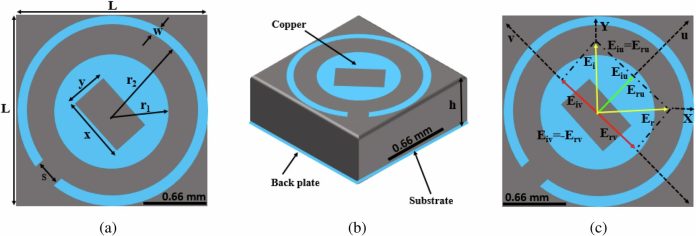
Scientists have created a groundbreaking, affordable device that could greatly improve satellite communication, high-speed data transfer, and remote sensing.
Engineers from the University of Glasgow led the development of this ultrathin, 2D metamaterial surface, which uses advanced technology to control and convert radio waves.
Their research was published in Communications Engineering.
Metamaterials are specially designed structures with properties not found in natural materials. This new metamaterial could enable future 6G satellites to carry more data, provide better remote sensing, and offer improved signal quality.
Currently, most communication antennas transmit and receive radio waves in either a vertical or horizontal direction, known as linear polarization.
If antennas on the transmitting and receiving ends are not properly aligned, the signal can weaken. Antennas are also affected by weather conditions, like rain and atmospheric interference, which can distort signals.
The new 2D metamaterial solves these issues by converting linear polarization into circular polarization. Circular polarization is more reliable because it can handle misalignment and is less affected by weather.
This makes communication between satellites and ground stations much stronger, ensuring more stable connections. Circular polarization also doubles the data transmission capacity by using both left-hand and right-hand signals.
This feature is especially useful for mobile applications, as it eliminates the need for precise antenna alignment. The metamaterial is only 0.64mm thick and is made from small copper cells placed on a high-frequency communication circuit board. The surface reflects and converts radio waves efficiently.
During lab tests, the metamaterial was illuminated by signals, and its performance was measured. The results showed that the material could convert signals to circular polarization effectively. It even worked well when radio signals hit the surface at angles of up to 45 degrees, which is important for space applications, where satellite alignment is often imperfect.
Professor Qammer H. Abbasi, the lead author of the study, explained that previous metamaterials were limited to narrow frequency ranges. However, this new surface works across a wide range of frequencies (from 12 GHz to 40 GHz), which are commonly used by satellites.
The 2D metamaterial could significantly improve communication between satellites, boost signal quality for phones, and enhance data transmission. It could also help satellites scan Earth more effectively, which may lead to better climate change tracking and wildlife monitoring.
Dr. Humayun Zubair Khan, the first author of the study, added that this development offers exciting possibilities, particularly in the space industry. The material’s lightweight and compact design make it ideal for satellite use.
The best part is that this metamaterial can be mass-produced using simple circuit board manufacturing methods, making it affordable and easy to adopt. This new technology has the potential to become a vital component in future satellite systems.


